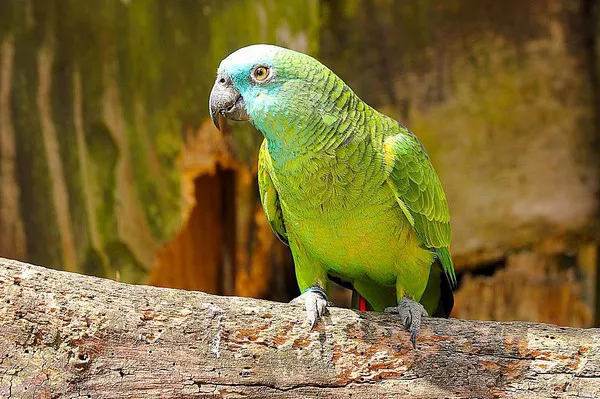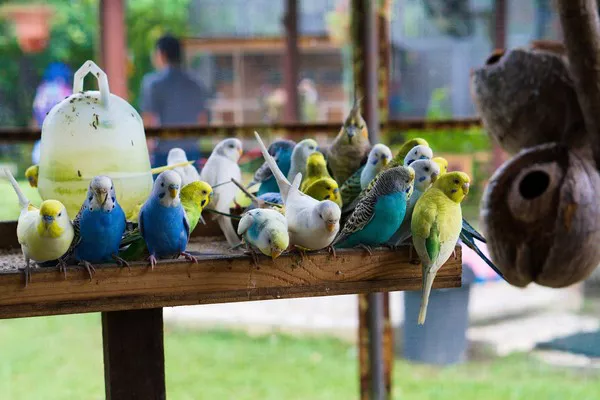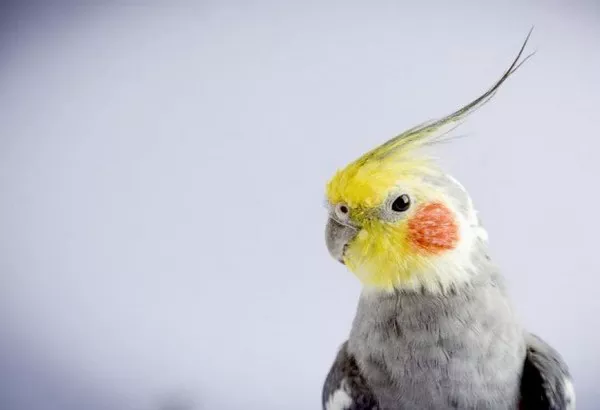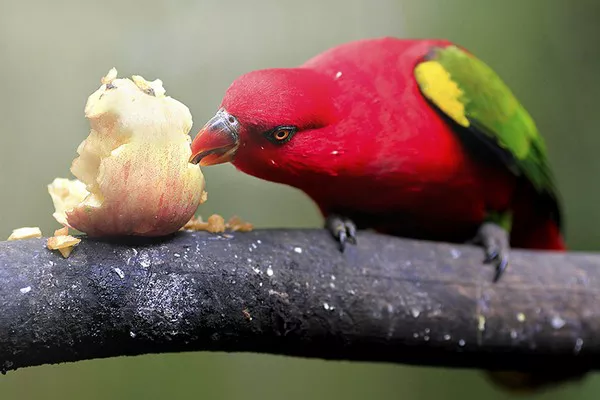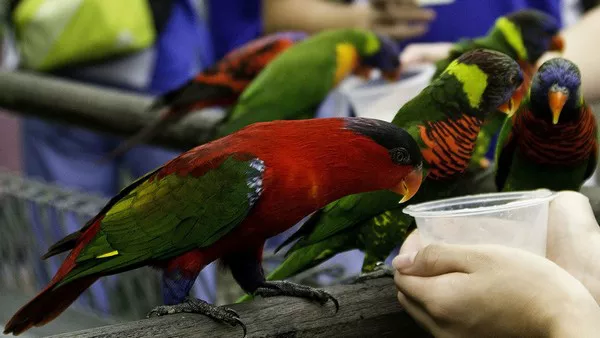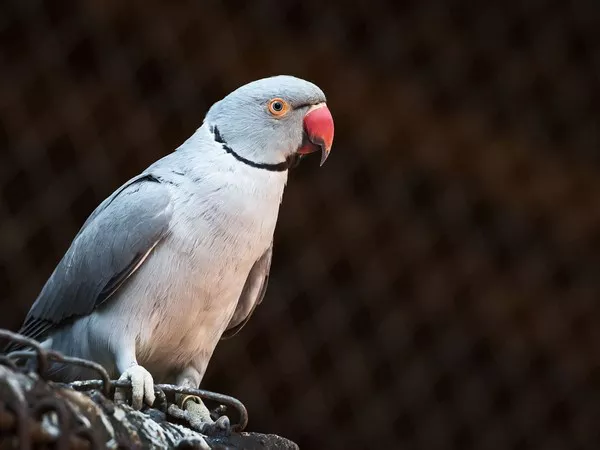Sun conures, with their vibrant plumage and playful personalities, have captured the hearts of many pet owners. As members of the parrot family, these birds exhibit a range of fascinating behaviors and social dynamics. One of the most intriguing questions about sun conures is whether sun conures recognize their owners. In this article, we will explore the social behaviors of sun conures, their cognitive abilities, and the factors that influence their recognition of humans.
Understanding Sun Conures
Characteristics of Sun Conures
Sun conures (Aratinga solstitialis) are small to medium-sized parrots native to South America, particularly the northeastern regions of Brazil. They are known for their striking colors, typically featuring bright yellow, orange, and green feathers. These birds are highly social and thrive on interaction, making them popular as pets.
Social Nature
Sun conures are naturally social creatures, often found in flocks in the wild. Their social structures are complex, and they communicate with one another using a variety of vocalizations and body language. This inherent sociality plays a crucial role in their ability to form bonds, not only with other conures but also with their human companions.
Do Sun Conures Recognize Their Owners?
The Science of Recognition
Recognition involves the ability to identify and respond differently to familiar individuals compared to strangers. In birds, this recognition can manifest in several ways, including vocal responses, behavior changes, and even physical displays.
Vocal Recognition
Research indicates that many bird species, including parrots, have the capacity for vocal recognition. Sun conures, known for their vocal abilities, can learn to associate specific sounds with their owners. This may include responding to their owner’s voice with excitement or specific calls. They may also mimic sounds or phrases that they frequently hear, further demonstrating their ability to recognize and engage with their owners.
Behavioral Cues
Sun conures often exhibit distinct behaviors that suggest recognition. For instance, when a familiar person approaches, a sun conure might become more animated, vocalizing excitedly or approaching the individual. Conversely, they may show signs of distress or wariness when encountering unfamiliar people. These behavioral cues are strong indicators that they can differentiate between known and unknown individuals.
Factors Influencing Recognition
While sun conures have the capability to recognize their owners, several factors influence the strength and clarity of this recognition.
Time Spent Together
The amount of time spent with a sun conure plays a significant role in the development of recognition. Birds that have frequent and positive interactions with their owners are more likely to form strong bonds. Regular handling, playtime, and socialization foster familiarity, allowing the bird to learn and recognize the owner’s unique characteristics.
Consistency of Interaction
Consistency in behavior and routine is vital for building recognition. Sun conures thrive on predictable interactions. For instance, if an owner consistently uses the same voice or cues when interacting with their bird, the conure will more readily associate those cues with that specific person.
Environment
The environment in which a sun conure lives can also affect recognition. A stable and enriched environment enhances a bird’s ability to learn and recognize their surroundings, including the people within them. Sudden changes, such as moving to a new home or significant alterations in the household, can disrupt this recognition process.
Building a Bond with Your Sun Conure
Creating a Trusting Relationship
To foster recognition and build a bond with a sun conure, owners can take several steps to establish trust and familiarity.
Positive Reinforcement
Using positive reinforcement techniques can significantly improve a sun conure’s bond with its owner. Offering treats, praise, and affection when the bird exhibits desired behaviors can encourage positive interactions. This approach not only strengthens the bond but also reinforces recognition.
Engaging Activities
Engaging your sun conure in various activities can enhance recognition. Providing toys, puzzles, and opportunities for social play can stimulate your bird mentally and physically. This engagement fosters a deeper connection and helps the bird recognize its owner as a source of fun and companionship.
Routine and Consistency
Establishing a routine can be beneficial for both the owner and the sun conure. Regular feeding times, play sessions, and interaction periods create a sense of predictability for the bird, making it easier for them to recognize their owner’s presence and associate it with comfort and security.
The Role of Socialization
Importance of Early Socialization
Early socialization is crucial for sun conures to develop healthy recognition and social skills. Birds that are exposed to a variety of people, environments, and experiences during their formative weeks are more likely to recognize and accept their owners later in life.
Handling and Interaction
Frequent, gentle handling is essential for young sun conures. This not only helps them become accustomed to human interaction but also encourages trust. Owners should handle their birds gently and often, speaking softly and offering treats to create positive associations.
Gradual Introduction to New People
When introducing a sun conure to new people, it is essential to do so gradually. Allow the bird to observe new individuals from a distance before engaging. This approach helps the conure feel secure and less overwhelmed, making it easier for them to recognize and accept new people while still maintaining a strong bond with their primary owner.
The Cognitive Abilities of Sun Conures
Problem Solving and Learning
Sun conures are intelligent birds capable of problem-solving and learning. They can understand cause-and-effect relationships, which is a key element in recognizing their owners. For instance, a sun conure may learn that if it approaches its owner, it will receive attention or treats.
Mimicry and Communication
Mimicry is another significant aspect of sun conure cognition. These birds can imitate sounds, words, and even phrases, which they often use to communicate with their owners. This ability not only serves as a means of interaction but also reinforces recognition. A conure that mimics its owner’s voice may be expressing familiarity and comfort.
Behavioral Signs of Recognition
Affectionate Behavior
When a sun conure recognizes its owner, it often displays affectionate behaviors. This can include preening, cuddling, and seeking proximity. A bird that nuzzles against its owner or seeks attention is likely demonstrating recognition and a bond.
Excitement and Vocalization
Sun conures are known for their exuberant personalities. When they see their owners, they often exhibit excitement through vocalizations and movement. This can include flapping their wings, chirping, or even performing little dances. Such behaviors are clear indicators of recognition and affection.
Body Language
Understanding sun conure body language is crucial for recognizing signs of owner recognition. When a bird approaches its owner with an open stance, raised feathers, and relaxed posture, these are positive signs of comfort and familiarity. Conversely, if a bird exhibits closed body language, such as puffing up or retreating, it may indicate discomfort or uncertainty.
Conclusion
In conclusion, sun conures are remarkable birds capable of recognizing their owners. Their social nature, cognitive abilities, and unique behaviors contribute to their capacity for recognition. By investing time, effort, and positive interactions, owners can foster a strong bond with their sun conures, enhancing the overall companionship and joy that these vibrant birds bring to their lives.
Understanding the dynamics of recognition in sun conures not only enriches the owner-bird relationship but also highlights the complexity of avian social behaviors. With patience and dedication, owners can cultivate a deep and lasting bond with their feathered friends, ensuring a fulfilling and joyful experience for both parties.
Related Topics:


